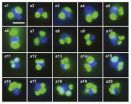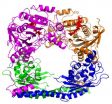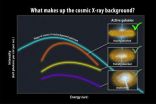(Press-News.org) With little more than a conventional photocopier and transparency film, anyone can build a functional microfluidic chip.
A local Cambridge high school physics teacher invented the process; now, thanks to a new undergraduate teaching lab at Harvard's School of Engineering and Applied Sciences (SEAS), students will be able explore microfluidics and its applications.
The Microfluidics Lab, developed by Dr. Anas Chalah, Director of Instructional Technology at SEAS, takes advantage of a simple but ingenious new method of creating lab-on-a-chip devices that are quick to produce, affordable, and reusable.
Chalah is excited—contagiously so—about the lab's potential to serve students from all areas of science and engineering.
"Harvard University shaped the emergence of the field of microfluidics and soft lithography through the leading research conducted in the labs of George Whitesides and David Weitz, among others," he says. "Now we are bringing those areas of experimentation to the undergraduate teaching labs at SEAS."
The first course to use the lab will be the mechanical engineering course ES 123, "Introduction to Fluid Mechanics and Transport Processes." Students enrolled in the course this spring will use sophisticated COMSOL MultiphysicsTM software to model the flow of liquid through chips of varying structure, in order to design and build optimal chips in the lab. The COMSOL software is widely used for design projects in both academic research and industry.
ES 123 is structured to emphasize the importance of the design process.
"Students do the simulation, go through the homework, and get exposed to the process before they even get in the lab," says Chalah.
Chalah emphasizes that the new lab will provide a core facility for multiple areas of undergraduate study. "We can get people from different disciplines excited about the same device," he says.
For example, the do-it-yourself opportunity will also appeal to budding biomedical engineers and premedical students, who can use the lab-on-a-chip devices to study and test clinical applications.
Chalah is particularly interested in a device called a concentration gradient generator, which allows two or more fluids to mix in a very controlled manner, producing a range of concentrations from 0 to 100 percent.
A variation of the device is used in drug testing, as it can be used to deliver a range of very precise drug concentrations to a set of experimental cell lines. With multiple cell lines built into one chip, as many as 80 tiny experiments can be performed at once, all under the same controlled conditions. Chalah expects that bioengineering lab courses at SEAS will soon be developed that incorporate this technology.
The technology used in the lab is not new, but a process that makes it affordable certainly is.
Commercially available microfluidic devices (see image below) are produced in a clean room using high-resolution photolithography and etching, a process which pushes the retail price to around $500 each.
Local high school physics teacher Joe Childs had a better idea: design the layout of the channels in PowerPointTM, print the image, and photocopy it onto a classroom-style transparency film several times until the layers of ink create raised ridges. The process results in a negative mold that can then be used to create channels in the polymer chip (see sidebar at top of page).
It sounds rudimentary, but it works.
Childs, who teaches at the nearby Cambridge Rindge and Latin School, collaborates with faculty and students at SEAS through the Research Experience for Teachers (RET) program funded by the National Science Foundation's National Nanotechnology Infrastructure Network.
He first developed the process in the lab of Bob M. Westervelt, Mallinckrodt Professor of Applied Physics at SEAS and Professor of Physics, with graduate student Keith Brown. He is now perfecting it with Chalah and an enthusiastic team of young interns for the undergraduate teaching labs.
Together, they can design and build a chip in a single afternoon, and, Childs adds, "the most expensive thing that we need is a copy machine."
The resulting chips are not as precise as the commercially available versions, but the benefit—besides the low cost—is that students will be able to experience the process of designing and building the devices themselves, applying their knowledge of the fundamental principles of fluid dynamics to create a functional tool.
The simplified process will allow other science teachers to introduce their students to an aspect of physics that might previously have been off limits due to cost.
"Believe me," says Chalah, "if people knew we could build a chip so cheaply, they would jump on it like this."
The creation of the new Microfluidics Lab, on the ground floor of Pierce Hall, was enabled by a generous donation from Warren Wilkinson '41. The lab features state-of-the-art microfluidic pumps, microscopes, ovens, and soft lithography and fabrication equipment.
INFORMATION:
Simple, ingenious way to create lab-on-a-chip devices could become a model for teaching and research
Microfluidics Lab at Harvard provides new core facility for undergraduate teaching
2011-01-21
ELSE PRESS RELEASES FROM THIS DATE:
Speaking the same language means better health care quality, Wayne State University study finds
2011-01-21
DETROIT—Wayne State University researchers have found that when patients and providers speak the same language, patients report less confusion and better health care quality. The findings were based on data from the Pew Hispanic Center/Robert Wood Johnson Foundation's Latino Health Survey.
Understanding the relationship between language and health care quality has important public health implications for providing services in an increasingly diverse U.S. population, according to Hector M. González, Ph.D., assistant professor of family medicine and public health at WSU's ...
Strong social ties benefit breast cancer patients
2011-01-21
Breast cancer patients who have a strong social support system in the first year after diagnosis are less likely to die or have a recurrence of cancer, according to new research from Vanderbilt-Ingram Cancer Center (VICC) and the Shanghai Institute of Preventive Medicine. The study, led by first author Meira Epplein, Ph.D., assistant professor of Medicine at VICC, was published in a recent edition of the Journal of Clinical Oncology.
Patients in the study were enrolled in the Shanghai Breast Cancer Survivor Study, a large, population-based review of female breast cancer ...
Newly discovered group of algae live in both fresh water and ocean
2011-01-21
A team of biologists has discovered an entirely new group of algae living in a variety of marine and freshwater environments. This group of algae, which the researchers dubbed "rappemonads," have DNA that is distinctly different from that of other known algae. In fact, humans and mushrooms are more closely related to each other than rappemonads are to some other common algae (such as green algae). Based on their DNA analysis, the researchers believe that they have discovered not just a new species or genus, but a potentially large and novel group of microorganisms.
The ...
Red blood cell hormone modulates the immune system
2011-01-21
New research reveals that a hormone best known for stimulating the production of red blood cells can modulate the immune response. The study, published by Cell Press in the January 27th issue of the journal Immunity, finds that erythropoietin (EPO) has contrasting influences on infectious and inflammatory diseases and may be useful in the design of new therapeutic strategies.
EPO is a cytokine hormone that stimulates the production of red blood cells by acting at EPO receptors (EPORs) on red blood cell precursors. Interestingly, other cell types also express EPORs. ...
Controlling symptoms can lead to improved quality of life for end-of-life patients
2011-01-21
LOUISVILLE, Ky. – Healthcare workers can most directly affect quality of life (QOL) of patients with advanced stage lung cancer by helping manage symptoms such as pain, lack of energy, shortness of breath, coughing, difficulty sleeping and dry mouth, according to a study recently published in the journal Oncology Nursing Forum.
Understanding the symptoms, particularly symptom distress - or the degree to which a symptom bothers a person, is crucial to improved patient care. Intervention at the time of diagnosis is important because patients with stage IIIb or IV lung cancer ...
Go figure: Math model may help researchers with stem cell, cancer therapies
2011-01-21
The difficult task of sorting and counting prized stem cells and their cancer-causing cousins has long frustrated scientists looking for new ways to help people who have progressive diseases.
But in a development likely to delight math teachers, University of Florida researchers have devised a series of mathematical steps that accomplishes what the most powerful microscopes, high-throughput screening systems and protein assays have failed to do — assess how rapidly stem cells and their malignant, stemlike alter egos increase their numbers.
The method, published in the ...
How the hat fits: Structural biology study reveals shape of epigenetic enzyme complex
2011-01-21
To understand the emerging science of epigenetics—a field that describes how genes may be regulated without altering the underlying DNA itself—scientists are deciphering the many ways in which enzymes act on the proteins surrounding DNA within cells.
One type of these enzymes, proteins known as histone acetyltransferases (HATs), act on DNA by modifying DNA-bound proteins called histones. This act of modification, called acetlyation, can dictate how histones interact with DNA and other proteins affecting processes such as DNA replication, transcription (reading the gene), ...
State of the Union 2011: Will President Obama commit to R&D, for jobs and economic growth?
2011-01-21
Research!America's chair, former Congressman John E. Porter (R-IL), and Research!America's CEO, Mary Woolley, issued the following statement in anticipation of President Barack Obama's State of the Union address.
Porter said, "I think the president understands that science, technology, innovation and research are where we lead the world and where we must make the ongoing investments to maintain that leadership. But he must, both in his State of the Union speech next Tuesday night and in the Budget he submits to Congress, make the case to both the American people and ...
NASA prepares to launch next Earth-observing satellite mission
2011-01-21
WASHINGTON -- NASA's newest Earth-observing research mission is nearing launch. The Glory mission will improve our understanding of how the sun and tiny atmospheric particles called aerosols affect Earth's climate. Glory also will extend a legacy of long-term solar measurements needed to address key uncertainties about climate change.
Glory is scheduled to launch from Vandenberg Air Force Base in California on Feb. 23 at 5:09 a.m. EST. It will join a fleet called the Afternoon Constellation or "A-train" of satellites. This group of other Earth-observing satellites, including ...
Swift survey finds 'missing' active galaxies
2011-01-21
Seen in X-rays, the entire sky is aglow. Even far away from bright sources, X-rays originating from beyond our galaxy provide a steady glow in every direction. Astronomers have long suspected that the chief contributors to this cosmic X-ray background were dust-swaddled black holes at the centers of active galaxies. The trouble was, too few of them were detected to do the job.
An international team of scientists using data from NASA's Swift satellite confirms the existence of a largely unseen population of black-hole-powered galaxies. Their X-ray emissions are so heavily ...
LAST 30 PRESS RELEASES:
Science briefing: An update on GLP-1 drugs for obesity
Lower doses of immunotherapy for skin cancer give better results
Why didn’t the senior citizen cross the road? Slower crossings may help people with reduced mobility
ASH 2025: Study suggests that a virtual program focusing on diet and exercise can help reduce side effects of lymphoma treatment
A sound defense: Noisy pupae puff away potential predators
Azacitidine–venetoclax combination outperforms standard care in acute myeloid leukemia patients eligible for intensive chemotherapy
Adding epcoritamab to standard second-line therapy improves follicular lymphoma outcomes
New findings support a chemo-free approach for treating Ph+ ALL
Non-covalent btki pirtobrutinib shows promise as frontline therapy for CLL/SLL
University of Cincinnati experts present research at annual hematology event
ASH 2025: Antibody therapy eradicates traces of multiple myeloma in preliminary trial
ASH 2025: AI uncovers how DNA architecture failures trigger blood cancer
ASH 2025: New study shows that patients can safely receive stem cell transplants from mismatched, unrelated donors
Protective regimen allows successful stem cell transplant even without close genetic match between donor and recipient
Continuous and fixed-duration treatments result in similar outcomes for CLL
Measurable residual disease shows strong potential as an early indicator of survival in patients with acute myeloid leukemia
Chemotherapy and radiation are comparable as pre-transplant conditioning for patients with b-acute lymphoblastic leukemia who have no measurable residual disease
Roughly one-third of families with children being treated for leukemia struggle to pay living expenses
Quality improvement project results in increased screening and treatment for iron deficiency in pregnancy
IV iron improves survival, increases hemoglobin in hospitalized patients with iron-deficiency anemia and an acute infection
Black patients with acute myeloid leukemia are younger at diagnosis and experience poorer survival outcomes than White patients
Emergency departments fall short on delivering timely treatment for sickle cell pain
Study shows no clear evidence of harm from hydroxyurea use during pregnancy
Long-term outlook is positive for most after hematopoietic cell transplant for sickle cell disease
Study offers real-world data on commercial implementation of gene therapies for sickle cell disease and beta thalassemia
Early results suggest exa-cel gene therapy works well in children
NTIDE: Disability employment holds steady after data hiatus
Social lives of viruses affect antiviral resistance
Dose of psilocybin, dash of rabies point to treatment for depression
Helping health care providers navigate social, political, and legal barriers to patient care
[Press-News.org] Simple, ingenious way to create lab-on-a-chip devices could become a model for teaching and researchMicrofluidics Lab at Harvard provides new core facility for undergraduate teaching




